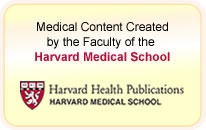
Conditions in Depth
This page contains the basic information about High Blood Pressure (Hypertension) .
Return to the High Blood Pressure (Hypertension) Main Condition Center
What Is It?
Blood pressure has two components:
-
Systolic pressure is the top number. It represents the pressure the heart generates when it beats to pump blood to the rest of the body.
-
Diastolic pressure is the bottom number. It refers to the pressure in the blood vessels between heartbeats.
Blood pressure is measured in millimeters of mercury (mmHg). So blood pressure would be expressed, for example, as 120/80 mmHg.
High blood pressure is diagnosed when one or both of these numbers is too high. High blood pressure is also called hypertension.
Blood pressure is categorized as follows:
Normal: Less than 120/80 mmHg
Prehypertension: 120/80 to 139/89 mmHg
Stage 1 hypertension: 140/90 to 159/99 mmHg
Stage 2 hypertension: 160/100 mmHg and above
Usually, systolic pressure increases as we age. However, after age 60, diastolic pressure usually begins to decline.
Prehypertension is not a disease—yet. But it does mean you are at increased risk for developing high blood pressure.
Although high blood pressure can cause symptoms such as headache and pounding heartbeat, it often causes no symptoms at all.
So why worry about high blood pressure? Because even when high blood pressure is not causing any symptoms, it can silently damage many organs, including the:
-
Brain
-
Eyes
-
Heart
-
Kidneys
-
Arteries throughout the body
You may not recognize the damage that silent hypertension has been doing to your body until you suddenly are stricken with a major disease. For example, hypertension increases your risk of heart attack, stroke, and kidney failure.
From Health A-Z, Harvard Health Publications. Copyright 2006 by the President and Fellows of Harvard College. All rights reserved. Written permission is required to reproduce, in any manner, in whole or in part, the material contained herein. To make a reprint request, contact Harvard Health Publications. Used with permission of StayWell.